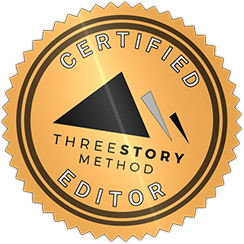There is a paradox I have operated under for many years as an artist. I want total creative freedom. I want to be able to do things my way, and yet, I’m usually most creative when I have boundaries or a structure in place.
When you are an independent publisher, and you get to decide how and when you publish, there is no structure. Even as a writer with an agent or a traditional publishing deal, most of what you do in the manuscript is entirely up to you before you hand it off to an agent or editor.
When I was playing in rock bands, we would often sit down for a songwriting session, and even though each song is a different artistic creation, there are certain elements in popular music that must be there or the listener will find them off-putting or strange.
For example, in most popular rock ‘n roll music, you must have a verse, chorus, and a bridge. Other elements of the music, such as a guitar solo, can vary from one style of music to another. But every song that you’ve heard on the radio or through iTunes conforms to some variation of a song structure.
Newer or more inexperienced writers often struggle because they either can’t work within structure, or they don’t understand how to structure their work. Either way, this poses a problem for writers. You can sit down and just start typing, but chances are, it will take you significantly more effort and a lot longer to complete a manuscript if you have no structure in place before you begin. If you get into a car and start driving, you will eventually end up somewhere, but you will have no idea where you are or how you got there.
On the publishing and marketing side, you are the CEO of your own business. You get to decide what rules and procedures you put in place, and which ones you won’t. You get to decide what systems you will create and what processes you will follow. But if you’ve never had any experience in managing your own projects or other people’s projects, it can be a challenge trying to figure out how to structure the tasks that need to get done.
The mastermind groups I have participated in have always had a solid balance between organic conversation and structure. On the one hand, if there is too much structure in the mastermind group, it can feel much like sitting in rows doing arithmetic in grade school—rote, repetitive, and uninspiring. However, on the other hand, if there is no structure and everyone is free-wheeling the conversation, there is a sense that the group has no direction or no shared goals. This can lead to frustration and disappointment in the mastermind model.
Because I have been a teacher for decades, I understand the balance between freedom and structure. In the mastermind groups that I lead, every session includes elements of free-form conversation as well as a known structure that does not vary from one session to another. In other words, when mastermind participants show up for the session, they know exactly what to do and when to do it. But they also know that within that structure is freedom.
For example, I always begin my mastermind sessions with what I call a “weekly win” roundtable. I move through the group and ask each person to tell me one thing that they thought was positive for the week. There is structure in the weekly wins segment, but the participants can share whatever they want, whether it’s from their publishing business or even their personal life.
Unfortunately, some people have never learned the value of structure. If you participate in a structured mastermind group, you can then transfer those skills to your own business. You begin to understand how the framework of structure doesn’t only increase productivity, but it can increase creativity as well.
So much of being a career author is the ability to manage projects. And if you’re an independent author, you have complete responsibility of being your own project manager.
Well-run mastermind groups have a structure that you can then use and transplant into your own business. Whether it’s the structure of the individual sessions, or how the mastermind group is laid out over the full period of the commitment, you begin to learn how that structure can benefit you.
Want to take your writing chops and business savvy to the next level? Check out The Author Success Mastermind group at https://theauthorsuccessmastermind.com/join/
Posted in Mindfulness, Productivity, Recent, Self Improvement

